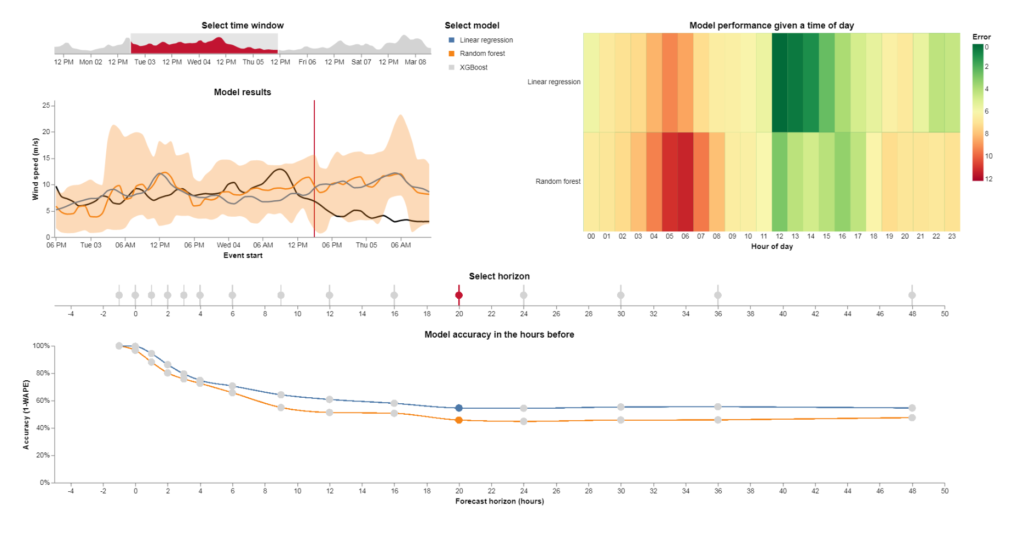The planning challenge: Predictive analytics offers tremendous value, e.g. for ensuring supply adequacy and preparing for contingencies. However, this value hinges on a high quality of time series forecasts. Bad forecasts lead to bad decisions. To achieve high quality, it is necessary to find suitable models that can deal with specific properties of the available data, and that generate results that are intuitive for decision-makers to act on.
The uncertainty: For each domain application, achieving high quality forecasts is a high-end innovation process that requires data scientists, IT developers and domain experts to work together.
Seita creates open-source tools and visuals to streamline the innovation of predictive analytics and to bring state-of-the-art machine learning models to work (e.g. for renewable energy production forecasts).
We do this by writing tools that help you:
- Compare forecasting models in depth, so they can be discussed within your team. We write code which computes and visualizes how well different models do over time and how certain their forecasts are (see visuals on the left). [timely-beliefs]
- Integrate new forecasting models into operational production systems with ease, by facilitating the interaction between data scientists and engineers. [timetomodel]
For its R&D, Seita works together with students from Centrum Wiskunde & Informatica (CWI), the University of Amsterdam (UvA) and EIT Master Programmes.


